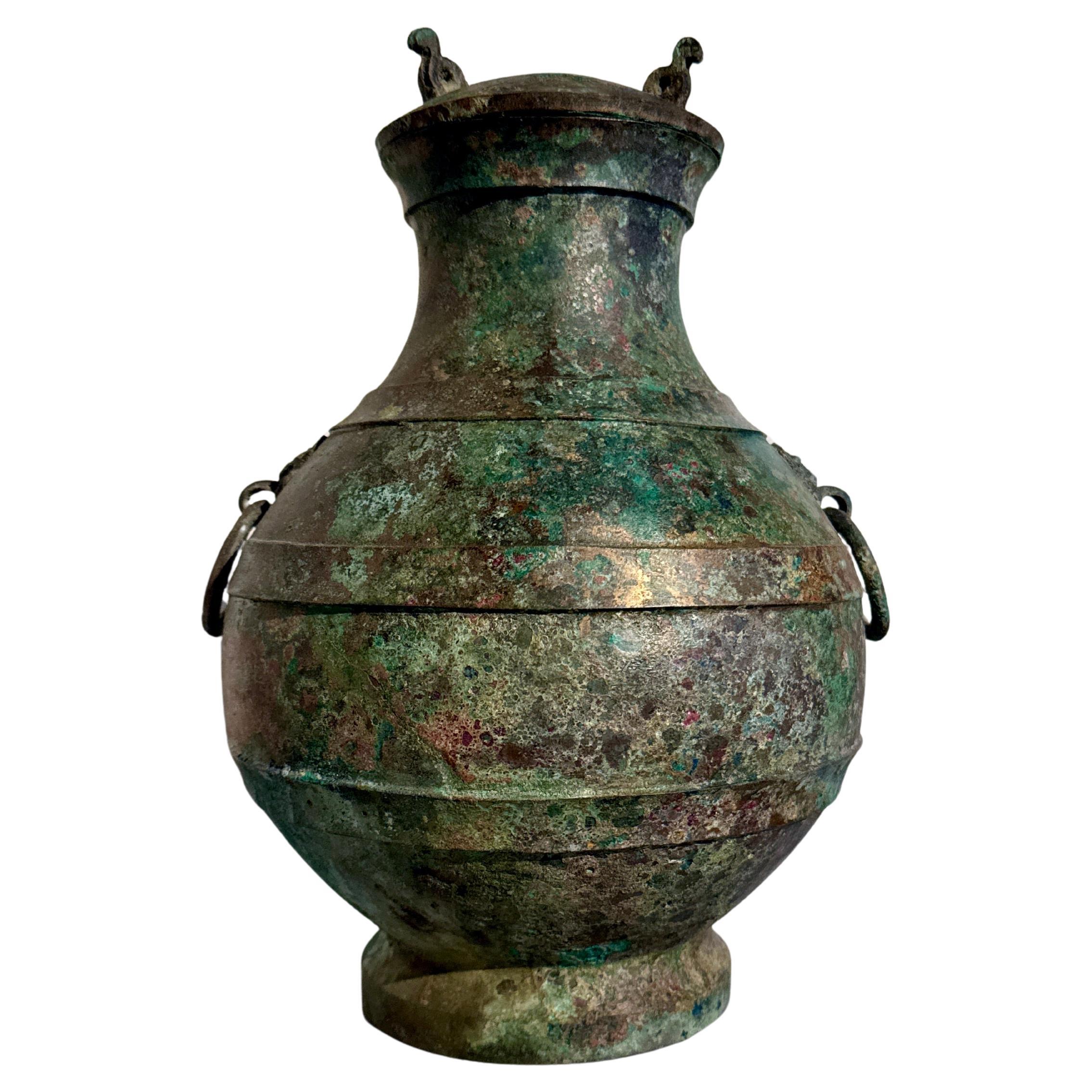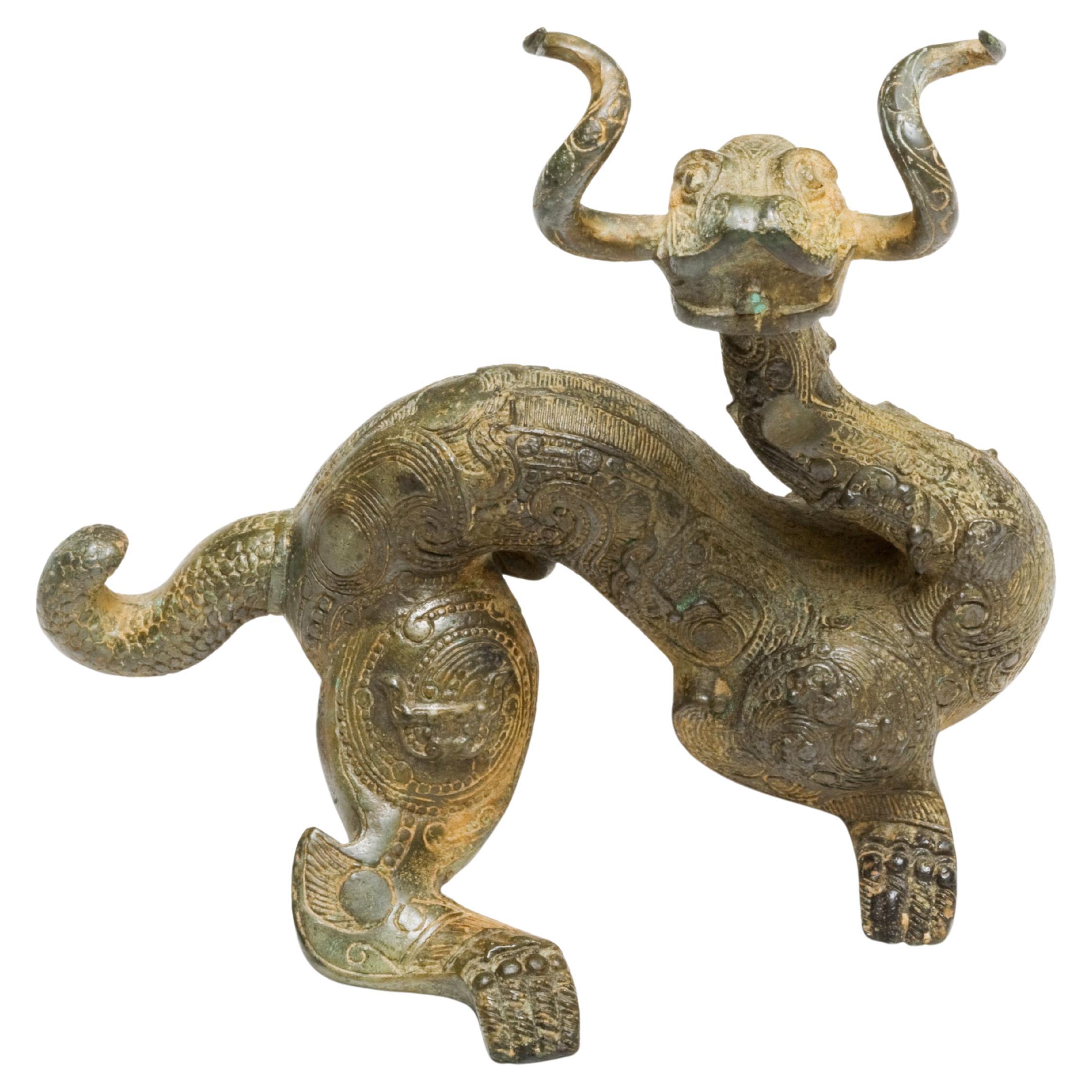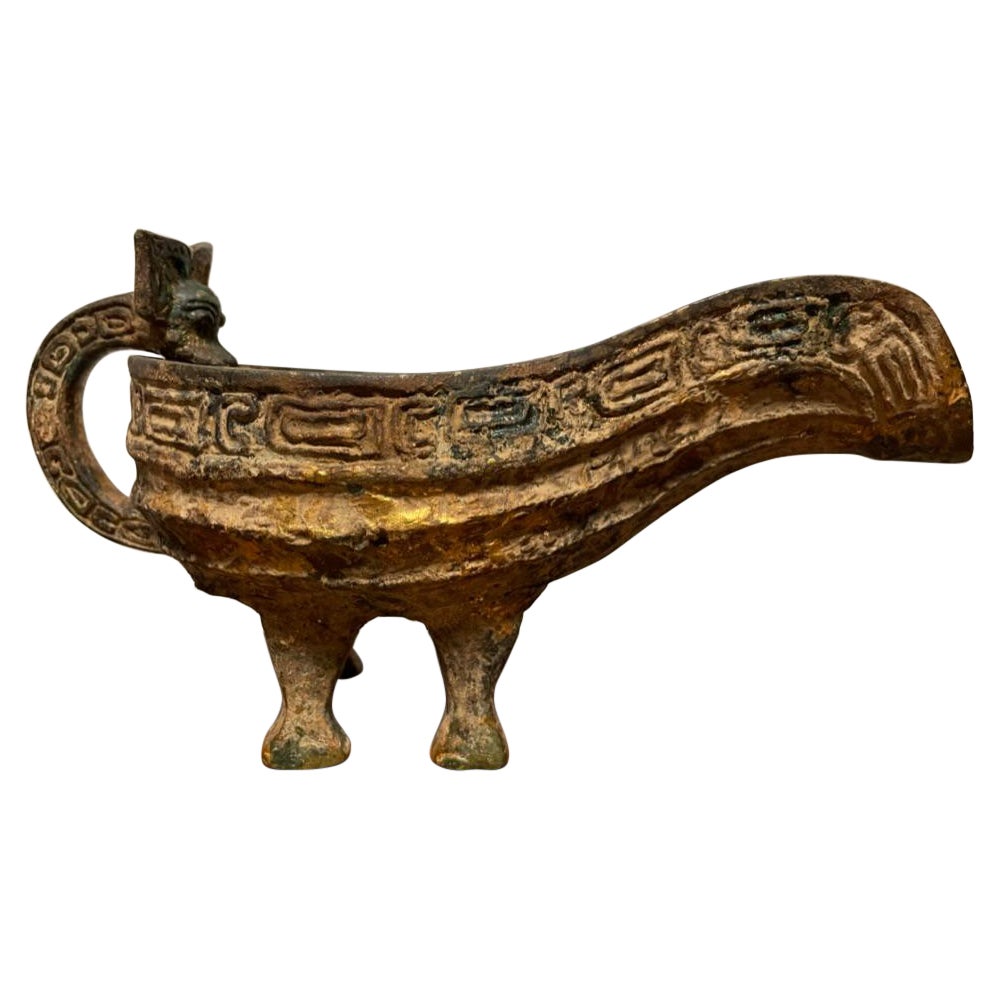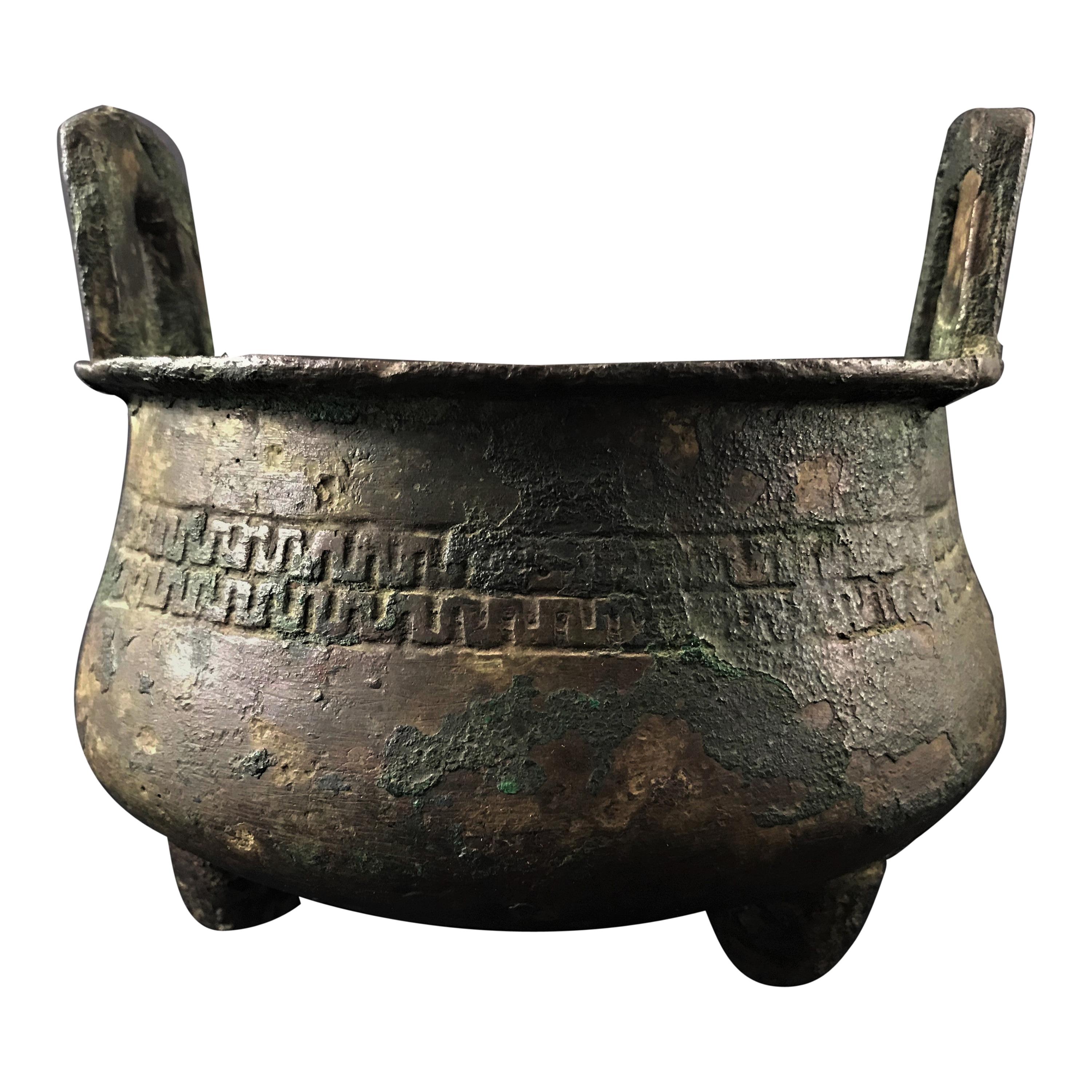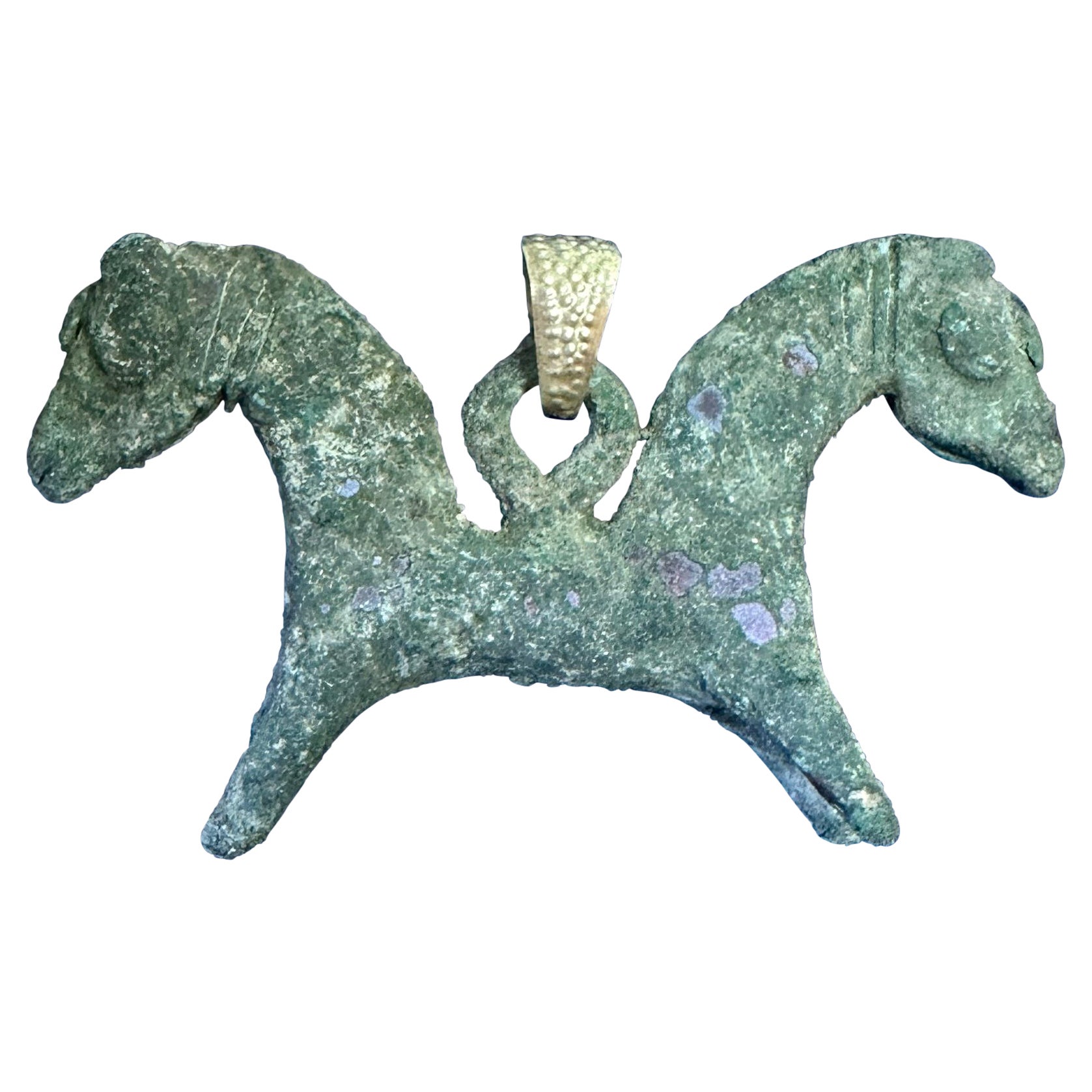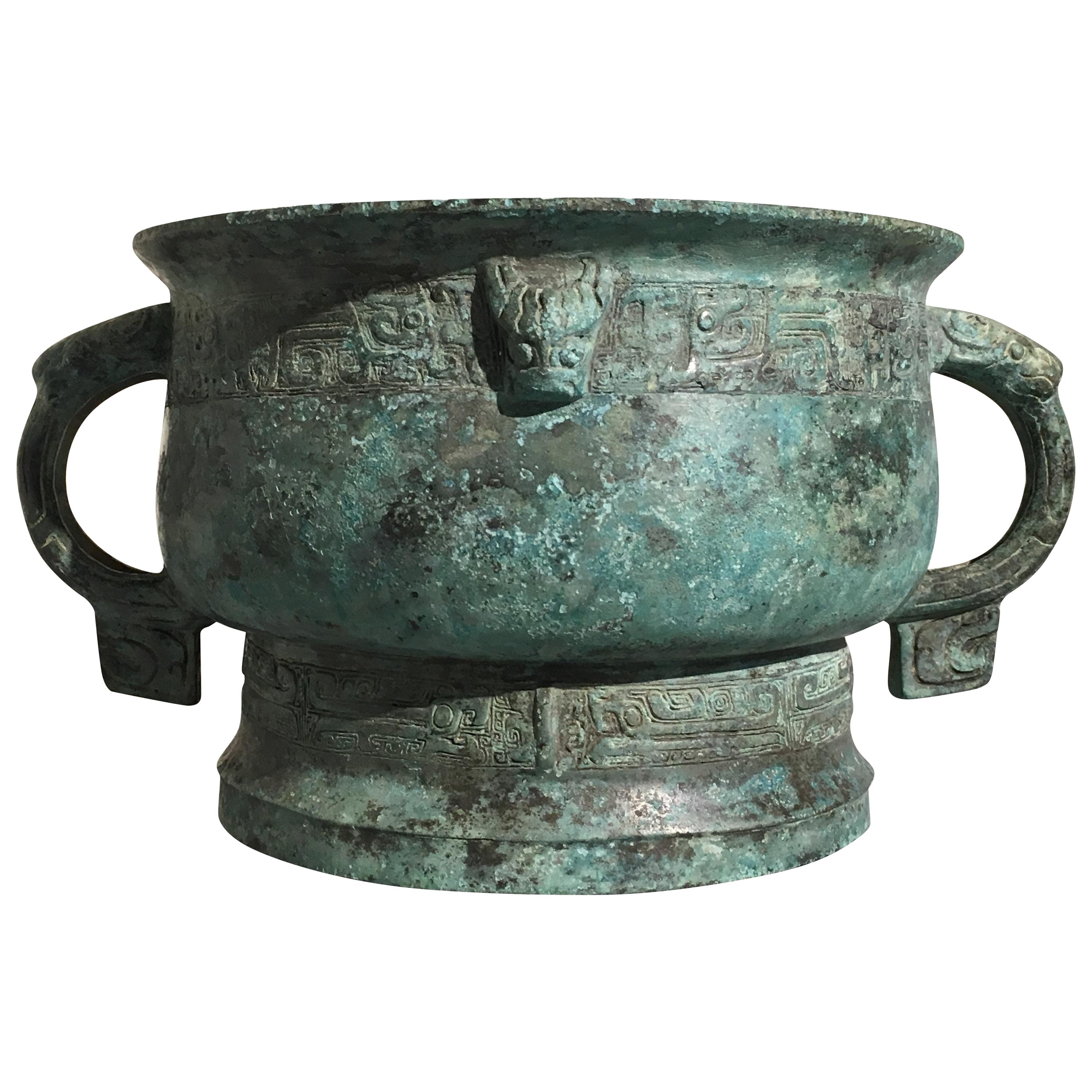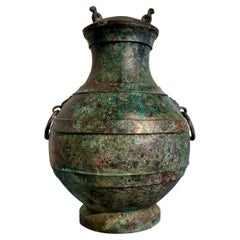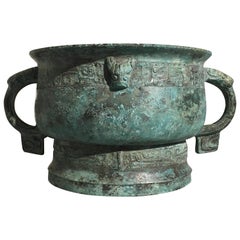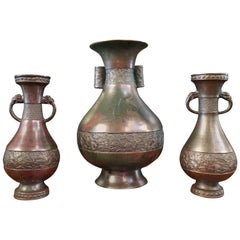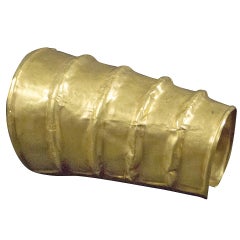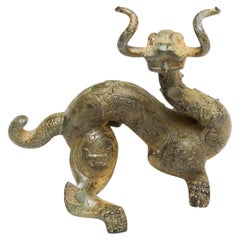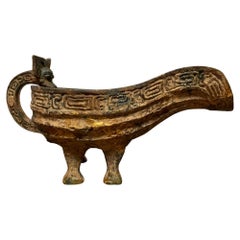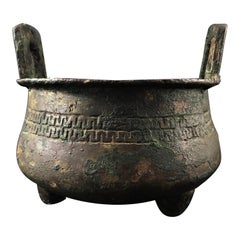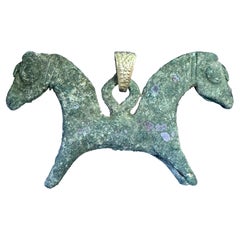Items Similar to Khitan Liao Dynasty Gold Clad Horse Trappings, 10th-11th Century, China
Want more images or videos?
Request additional images or videos from the seller
1 of 15
Khitan Liao Dynasty Gold Clad Horse Trappings, 10th-11th Century, China
$27,000
£20,486.98
€23,425.03
CA$37,711.68
A$41,930.26
CHF 21,893.67
MX$510,393.31
NOK 279,353.64
SEK 261,741.01
DKK 174,825.30
Shipping
Retrieving quote...The 1stDibs Promise:
Authenticity Guarantee,
Money-Back Guarantee,
24-Hour Cancellation
About the Item
A wonderful and rare set of Khitan Liao gold clad copper alloy repousse horse trappings, featuring thirteen pieces on a modern museum display mount, Liao Dynasty (916 to 1125), China.
The fittings crafted from a copper alloy with a scrolling floral and foliate design worked in high relief repousse, then clad with a thick gold sheet overlay. The set comprised of a two part buckle, a three way buckle, and nine decorative plaques. The plaques would originally have been attached to a leather bridle. Remnants of cloth and leather are still present to the interior of some pieces.
The Khitan were a nomadic people who roamed the steppes of north eastern Asia. Consolidating power under the ruler Yelu Abaoji, they formed a powerful dynastic empire contemporaneous with the Chinese Song Dynasty, and are considered a legitimate Chinese dynasty as well, known as the Liao Dynasty.
On loan to the Heritage Museum of Art, Chicago, IL 2017 - 2019.
- Dimensions:Height: 10.25 in (26.04 cm)Width: 9 in (22.86 cm)Depth: 4.5 in (11.43 cm)
- Style:Tang (Of the Period)
- Materials and Techniques:
- Place of Origin:
- Period:
- Date of Manufacture:10th-11th Century
- Condition:Wear consistent with age and use. Minor losses. Minor fading. In very good condition for age. With some areas of verdigris. Remnants of cloth, leather and resin to the interior.
- Seller Location:Austin, TX
- Reference Number:1stDibs: LU894716946822
About the Seller
5.0
Platinum Seller
Premium sellers with a 4.7+ rating and 24-hour response times
Established in 2001
1stDibs seller since 2010
345 sales on 1stDibs
Typical response time: <1 hour
- ShippingRetrieving quote...Shipping from: Austin, TX
- Return Policy
Authenticity Guarantee
In the unlikely event there’s an issue with an item’s authenticity, contact us within 1 year for a full refund. DetailsMoney-Back Guarantee
If your item is not as described, is damaged in transit, or does not arrive, contact us within 7 days for a full refund. Details24-Hour Cancellation
You have a 24-hour grace period in which to reconsider your purchase, with no questions asked.Vetted Professional Sellers
Our world-class sellers must adhere to strict standards for service and quality, maintaining the integrity of our listings.Price-Match Guarantee
If you find that a seller listed the same item for a lower price elsewhere, we’ll match it.Trusted Global Delivery
Our best-in-class carrier network provides specialized shipping options worldwide, including custom delivery.More From This Seller
View AllChinese Archaic Bronze Hu and Cover, Han Dynasty (206 BC - 220 AD), China
Located in Austin, TX
A fantastic Chinese Han Dynasty archaic bronze ritual wine vessel, hu, and cover, ex. Michael Goedhuis, Han Dynasty (206 BC - 220 AD), China.
The archaic ritual bronze hu of typical...
Category
Antique 15th Century and Earlier Chinese Han Antiquities
Materials
Bronze
Archaic Chinese Bronze Ritual Vessel, Gui, Early Western Zhou, 11th century BCE
Located in Austin, TX
A stunning and rare Chinese archaic bronze gui, a type of ritual bronze vessel used to hold grain, either for feasting, or for making offerings ...
Category
Antique 15th Century and Earlier Chinese Archaistic Antiquities
Materials
Bronze
Assembled Chinese Late Yuan / Early Ming Dynasty Bronze Garniture
Located in Austin, TX
Consisting of a large baluster vase (H: 14.25") with arrow handles and a near pair of smaller baluster vases with mythical beast loop handles.
The large vase, of yuhuchunping form, ...
Category
Antique 15th Century and Earlier Chinese Ming Scholar's Objects
Materials
Bronze
Chinese Dian Culture Large Gold Cuff, circa 2nd Century BC, Southern China
Located in Austin, TX
A large and impressive solid high karat gold cuff from the Dian Kingdom, circa 2nd century BC, modern day Yunnan Province, China.
.
This striking cuff is crafted from hand hammered ...
Category
Antique 15th Century and Earlier Chinese Han Antiquities
Materials
Gold
Dong Son Bronze Bells, Group of 6, circa 3rd - 1st century BCE, Vietnam
Located in Austin, TX
A highly decorative group of six Dong Son Culture cast bronze bells, circa 3rd to 1st century BCE, modern day Vietnam.
The bells of various sizes, shapes, and designs. All with hea...
Category
Antique 15th Century and Earlier Vietnamese Antiquities
Materials
Bronze
Chinese Archaic Bronze Wine Vessel, Bianhu, Han Dynasty, China
Located in Austin, TX
A sublime Chinese archaic bronze wine vessel, called a bianhu, Han Dynasty (206 BC - 220 AD), China.
The bianhu with a flattened oblong body,...
Category
Antique 15th Century and Earlier Chinese Han Antiquities
Materials
Bronze
You May Also Like
An Exceptional Gilt-Bronze Dragon, Presumably Six Dynasties
Located in seoul, KR
An art piece presumably from the Six Dynasties period in China, spanning from the 3rd to the 6th centuries. This era is known for its political fragmentation but also significant cul...
Category
Antique 15th Century and Earlier Hong Kong Antiquities
Materials
Bronze
$16,250 Sale Price
35% Off
Chinese Archaic Style Gilt Bronze and Verdigris Vessel
Located in Stamford, CT
Chinese archaic style gilt bronze pouring vessel with dragon headed handle and geometric decoration. With wonderful gilt and verdigris patina. The boat...
Category
Early 20th Century Chinese Archaistic Metalwork
Materials
Bronze
$1,160 Sale Price
20% Off
China Zhou Dynasty Bronze Perfume Burner
Located in Beuzevillette, FR
Bucket burns perfume in bronze resting on three feet. The body is sculpted with a band frieze with an archaic motif. Two inverted U-shaped handles punctuate the edge. This type of bronze bucket was cast with lost wax from molds in several parts and assembled when the piece was poured, these are the traces that can be seen on the back of the bucket. . The bronze has a beautiful green and dark gray excavation patina. This perfume burner was originally to have longer feet, no doubt arched, cut very long ago since the place of the cut has the same patina as the rest of the piece.
China Zhou Dynasty...
Category
Antique 15th Century and Earlier Chinese Archaistic Antiquities
Materials
Bronze
Ancient Luristan Bronze Horse Amulet Pendant 1000 BC 14 Karat Gold Enamel
Located in New York, NY
Unveil the elegance of antiquity with this Ancient Luristan Bronze and Enamel Double Horse Amulet pendant necklace in 14 Karat Gold. The magnificent ancient Luristan horse amulet da...
Category
Antique 15th Century and Earlier Persian Classical Roman Pendant Necklaces
Materials
Gold, 14k Gold, Yellow Gold, Bronze, Enamel
Chinese Gilded Bronze "Archaistic" Style Drinking Vessel
Located in Montreal, QC
Gilded bronze "Archaistic" style bronze Chinese vessel.
Category
Antique 19th Century Chinese Archaistic Vases
Corsican Bronze Hoard
Located in London, GB
Dagger L: 27.8 cm,
Luniform bronze, possibly a belt buckle L: 10.8 cm,
Shield-shaped bronze with a point Diam: 6.5 cm,
Pommel Diam: 3.7 cm,
Violin-bow brooch L: 17.5 cm,
P-Shape...
Category
Antique 15th Century and Earlier European Classical Roman Antiquities
Materials
Bronze
$88,850 / set
